There can be your advertisement
300x150
Choosing a Sink for the Bathroom: 7 Options from Different Materials
1. Glass
A glass sink pairs beautifully with chrome fixtures. Additionally, you can make the glass frosted, colored, or add patterns. Techniques such as melting and blowing contribute to the design: a sink shaped like a flower bud, a mosaic basin, or a tilted hemisphere - why not?
Pros: attractive design and lighter weight compared to ceramic washbasins. Glass sinks are resistant to staining from colorful liquids (e.g., red wine, coffee, iodine). Cons: water spots and streaks are more visible on glass surfaces than ceramic ones - they require careful maintenance. Another drawback is the higher cost.

2. Ceramic
Ceramic comes in two types - faience and porcelain. You might find it hard to distinguish between them, but over time you'll notice that cleaning a faience sink requires more effort. Faience is porous, so it's recommended to coat such a washbasin with glaze for extended durability. Porcelain, on the other hand, has less porous structure and is more resistant to mechanical damage. It also captivates with its whiteness. However, it tends to be more expensive.
Pros: attractive design and pristine white color; material's resistance to high temperatures and all kinds of abrasive cleaning agents. Cons: fragility (less durable than metal sinks, for example); surface glaze damage can lead to tiny cracks.
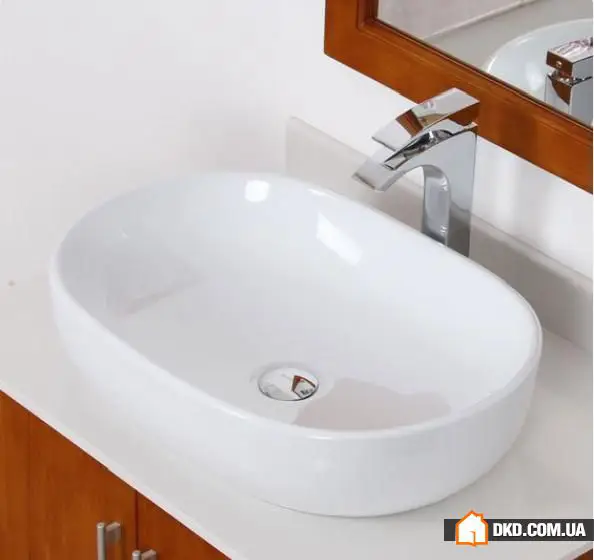
3. Natural Stone
Marble, granite, and onyx are natural stones most commonly chosen for bathroom sinks. Be cautious though: marble is more porous than granite, so it can absorb staining liquids if spilled.
Pros: a surface created by nature looks very striking. We also note the material's durability and resistance to mechanical and temperature impacts. Cons: significant weight - such sinks are hard to lift upstairs and install. Despite its strength, stone is not immune to cracking. Restoring the surface can be problematic.
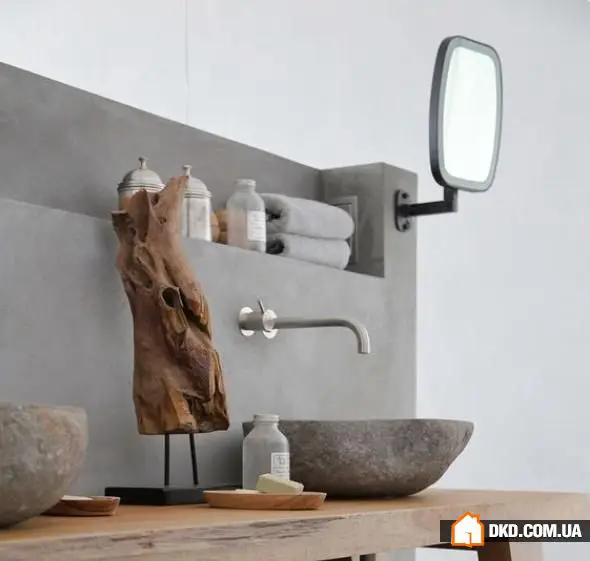
4. Artificial Stone
A sink made of artificial stone is an ideal choice for those who appreciate natural stone but have budget constraints. This alternative offers lower weight and reduced cost.
Pros: artificial stone is durable and comes with a wide color palette. It's also very strong, and it would take considerable effort to damage it. Minor scratches can be easily restored. Furthermore, it's easy to install and maintain. Cons: higher price compared to faience or metal.
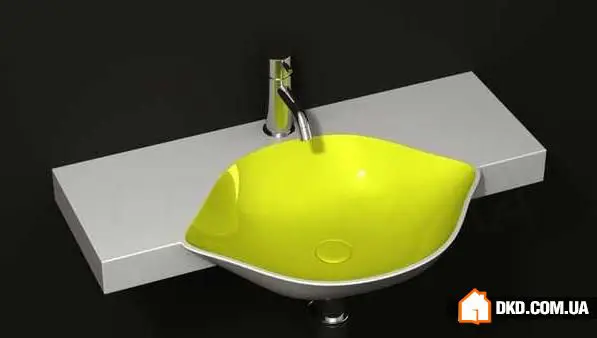
5. Metal
The most popular option is a sink made from stainless steel; there are also variants made of copper, bronze, brass, and cast iron. Stainless steel matches well with chrome fixtures.
Pros: affordable price and long-lasting durability. Additionally, there's no risk of chipping the sink surface during installation or transport. Cons: metal surfaces, especially glossy ones, require meticulous care - scratches and fingerprints are particularly noticeable.

6. Wood
Wooden sinks are rarely seen in bathrooms - they're expensive and demand careful maintenance. The choice of wood type is also important. For example, oak and larch are the most moisture-resistant. Those who enjoy exotic options might prefer bamboo. Pros: attractive natural wood texture. No risk of cracking during transport or installation, and it's slightly lighter in weight. Cons: high cost. Additionally, the protective coating on the surface may wear off or get damaged over time, requiring restoration.

7. Plastic
Plastic washbasins are nearly absent from the Russian market, but some foreign manufacturers offer models: for example, the Italian company Agape provides PVC washbasins in various colors and original shapes. Pros: light weight. A wide color range will please fans of vibrant design. Easy installation and low cost appeal to everyone.
Cons: plastic sinks may not withstand sharp temperature changes, aggressive cleaning agents, or high mechanical stress.
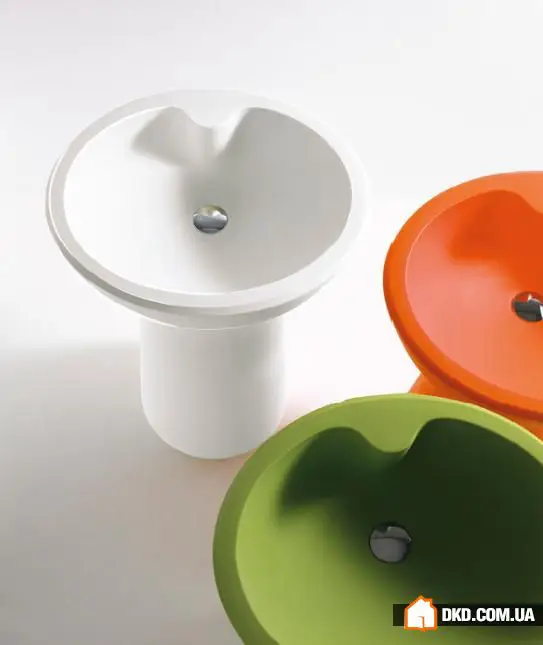
More articles:
 From Office to Laundry Room: 19 Cool Design Ideas for Your Balcony
From Office to Laundry Room: 19 Cool Design Ideas for Your Balcony 5 Main Rules for Living Together
5 Main Rules for Living Together Underwater Rocks in Kitchen Renovation: A Pro's Advice
Underwater Rocks in Kitchen Renovation: A Pro's Advice How Much Sunlight to Install in Grams: 6 Facts About Insolation
How Much Sunlight to Install in Grams: 6 Facts About Insolation What to Do Right Now: Choosing a New Color for Interior
What to Do Right Now: Choosing a New Color for Interior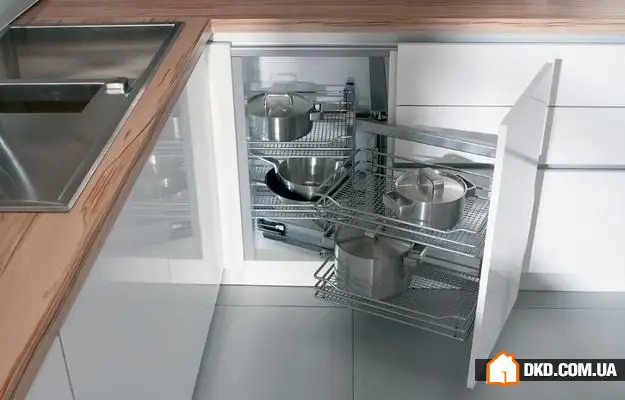 10 Big Secrets of a Small Kitchen – Fit Everything You Need
10 Big Secrets of a Small Kitchen – Fit Everything You Need How to Arrange a Kitchen with Balcony: 3 Options + Expert Comments
How to Arrange a Kitchen with Balcony: 3 Options + Expert Comments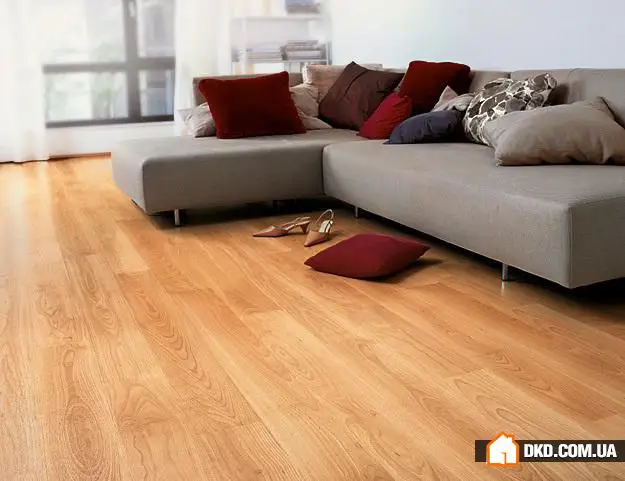 Visual Guide to Installing Linoleum in an Apartment
Visual Guide to Installing Linoleum in an Apartment